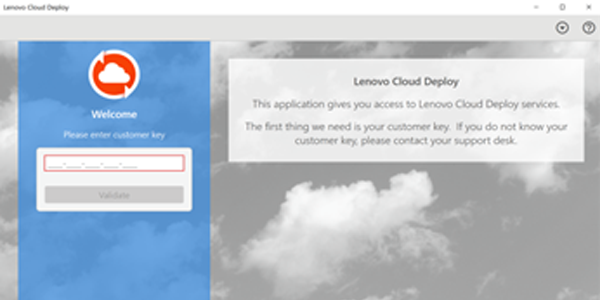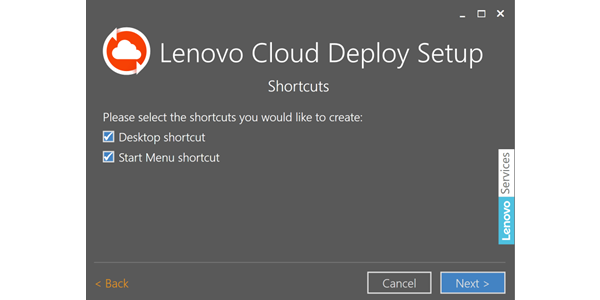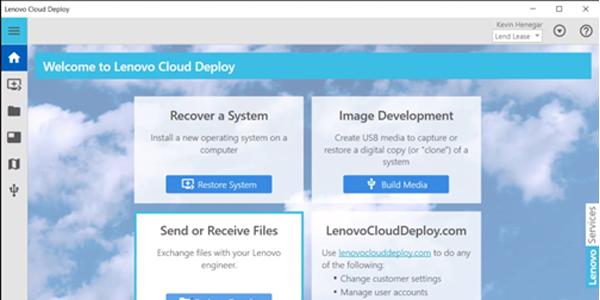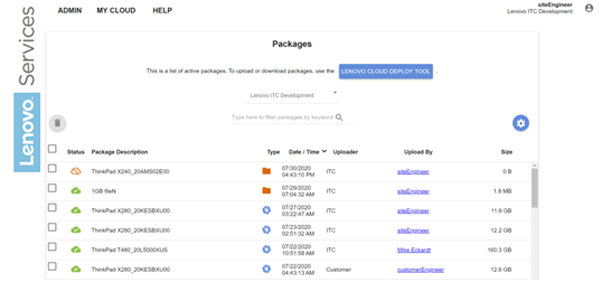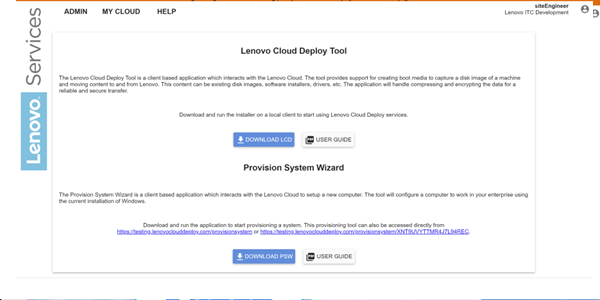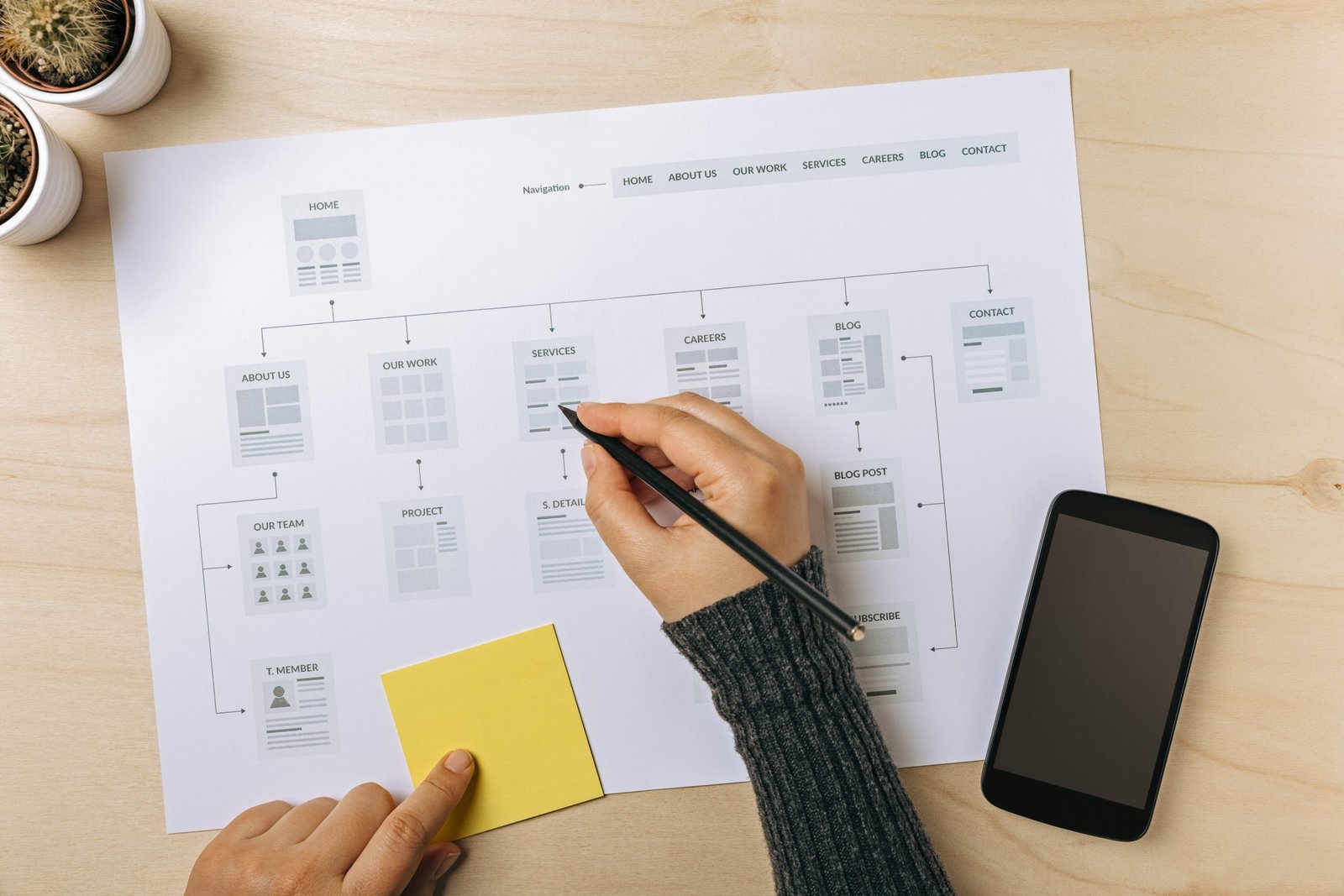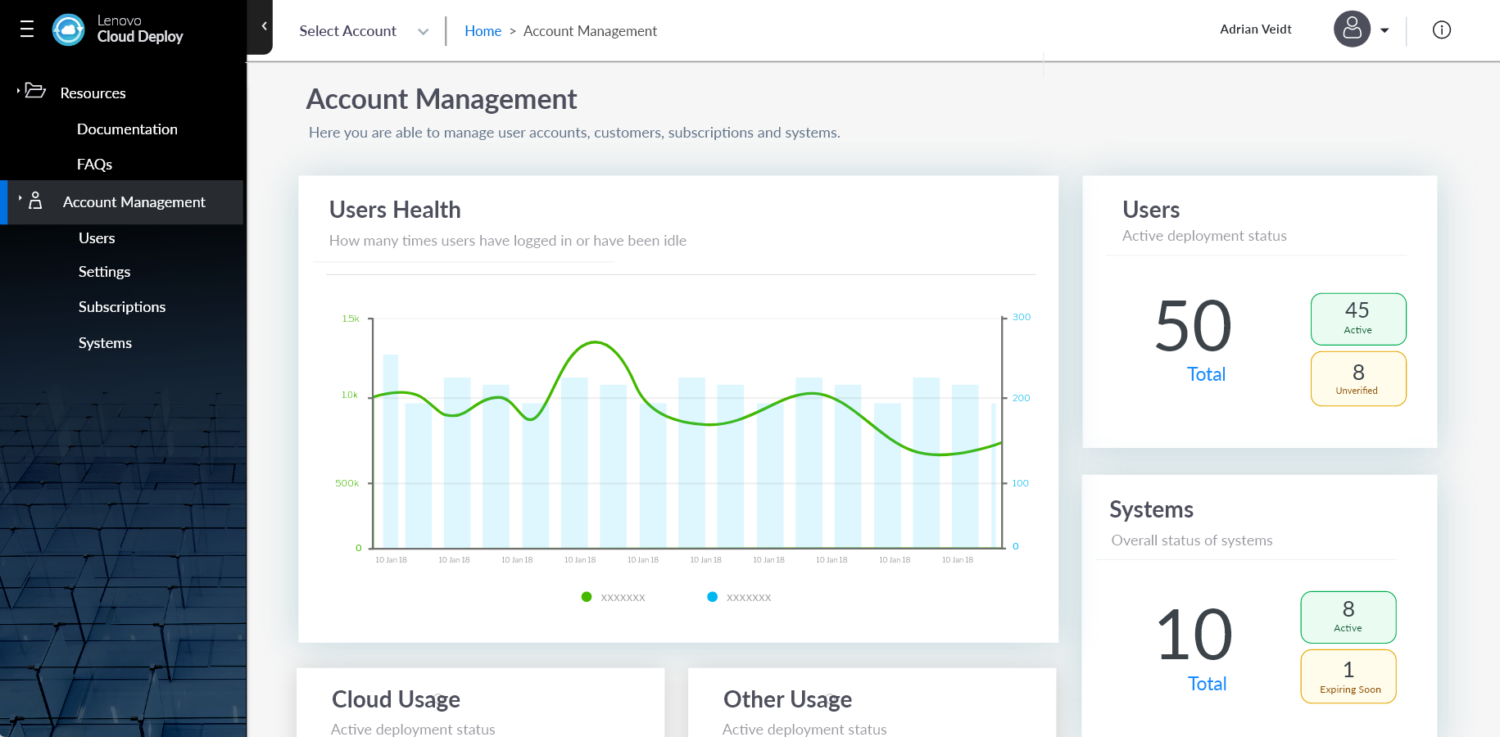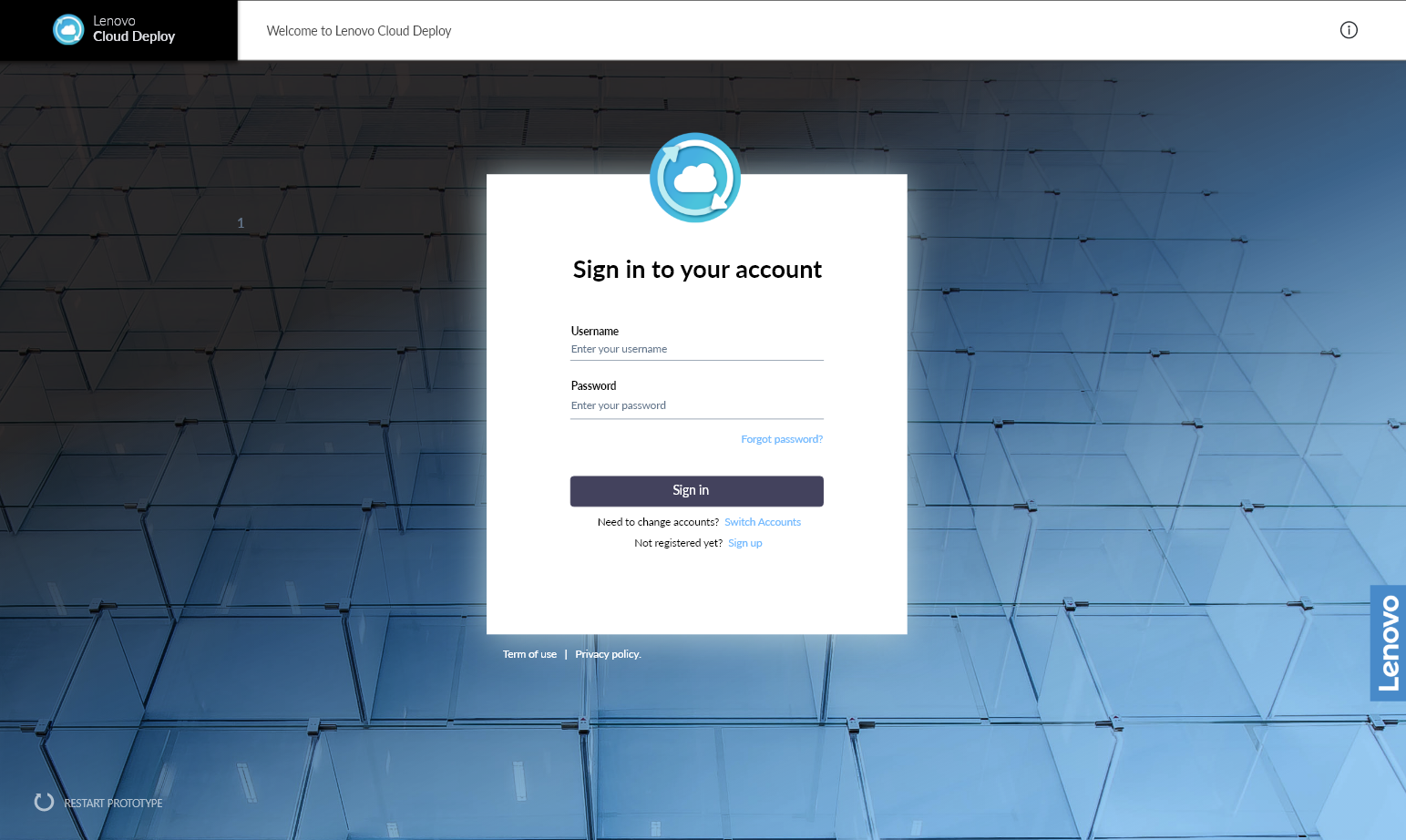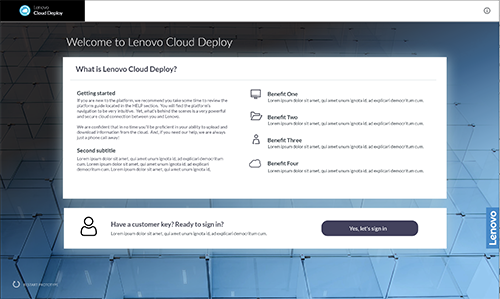Lenovo Cloud Deploy
Lenovo’s platform, Lenovo Cloud Deploy, enables IT organizations to build custom images (with or without assistance from Lenovo) through LCD’s website and application. IT organizations can quickly send the images to Lenovo via a secure cloud connection for testing, then retrieve the images via the cloud; all within a short period of time.
LCD currently consists of a website and an application. The Website is to change customer settings, manage users and deployments. And the application is for actionable items, such as creating images and testing images before going into production.
EMPLOYER:
Lenovo
TOOLS USED:
Adobe XD, Design System, HTML, CSS, Usertesting.com, 1:1 Interviews, Journey Mapping, Information Architecture
MY ROLE:
Lead UX/UI Designer, Researcher, Collaborator across cross-functional team
Where the journey began…
The Complexity
Lenovo Cloud Deploy is an IT tool that has many different user types that have a variety of permissions. Users could consist of Lenovo Software Engineers, Staff Engineers, Admins, Developers or even team leads that have many different permissions and roles. LCD is sold as a service to businesses to allow them to quickly and effectively reimage devices seamlessly. There are many moving parts from the purchase of the devices, to shipment, to creating images, and provisioning onto deploying the images onto specific devices.
The Opportunity
The LCD website and application are well perceived in most aspects of functionality. Most issues were seen in the usability of both the website and the application itself. These usability issues include the initial customer start-up, overall customer journey, and some productivity insights for both developers and customers.
- LCD website and application are well perceived and have all the tools needed to get the job done
- Inconsistent look and feel throughout the whole journey
- Customer confusion about what the difference is between the LCD app and the website
- Streamlining the app and website into one could improve the overall experience in productivity and lessen confusion.
1:1 Interviews
I conducted several 1:1 interviews with Lenovo Software Engineers, Staff Engineers, a Team Lead, and external customers as well. Their roles either work directly with the end-user or are developers that use Lenovo Cloud Deploy App, and Website.
Some of the insights are highlighted below.
- Usability – The features and functionality are there but we can improve on the usability and experience to showcase the tools better.
- Productivity – There has been some confusion on what the difference is between the app and website for customers. And mentions how you search for customers, then edit, then expect to return where you left off. To find that you don’t.
- Initial Start-Up – The initial startup of using the tool needs clarification on how to begin using the LCD web and application.
UX Assessment
I also conducted a UX assessment of the current Lenovo Cloud Deploy beyond what I discovered in the 1:1 interviews. I’ve listed below the key findings.
- General Overview
- Inconsistent look and feel throughout the whole journey
- Both app, setup, and website do not adhere to current Lenovo design standards
- No metrics (previously mentioned)
- Discoverability
- The initial startup of using the tool needs clarification on how to begin using the LCD web and application.
- Improve the landing/Welcome page
- Review the information architect
After synthesizing the insights from the 1:1 interviews and also the UX Assessments it was time to define the core problems and the type of users. Due to the different user types, their permissions, and type of roles they may carry there were additional insights that needed to be uncovered.
- Provisional Personas: Software Engineers, Staff Engineers, Admins, Developers, and Team Leads
- Site Mapping
- Information Architecture
- Analytical Plan
Ideate
During the ideation phase, I first created a series of wireframes explaining the features, functionality, and different types of user flow. I then progressed to mid to high-fidelity mockups. Throughout this process, I collaborated closely with the stakeholders and the developers to work through any technical limitations or issues. If any issues were to arise we would talk them out and meet in the middle. Or agree on a short, mid, and long-term plan if all the UX recommendations couldn’t be delivered on the first launch.
Prototype
During the ideation phase, I first created a series of wireframes explaining the features, functionality, and different types of user flow. I then progressed to mid to high-fidelity mockups. Throughout this process, I collaborated closely with the stakeholders and the developers to work through any technical limitations or issues. If any issues were to arise we would talk them out and meet in the middle. Or agree on a short, mid, and long-term plan if all the UX recommendations couldn’t be delivered on the first launch.
I created a clickable prototype showing all different role scenarios and corner cases. Since there wasn’t a design system in place, I created a style guide and annotated detailed documentation for the developers.


